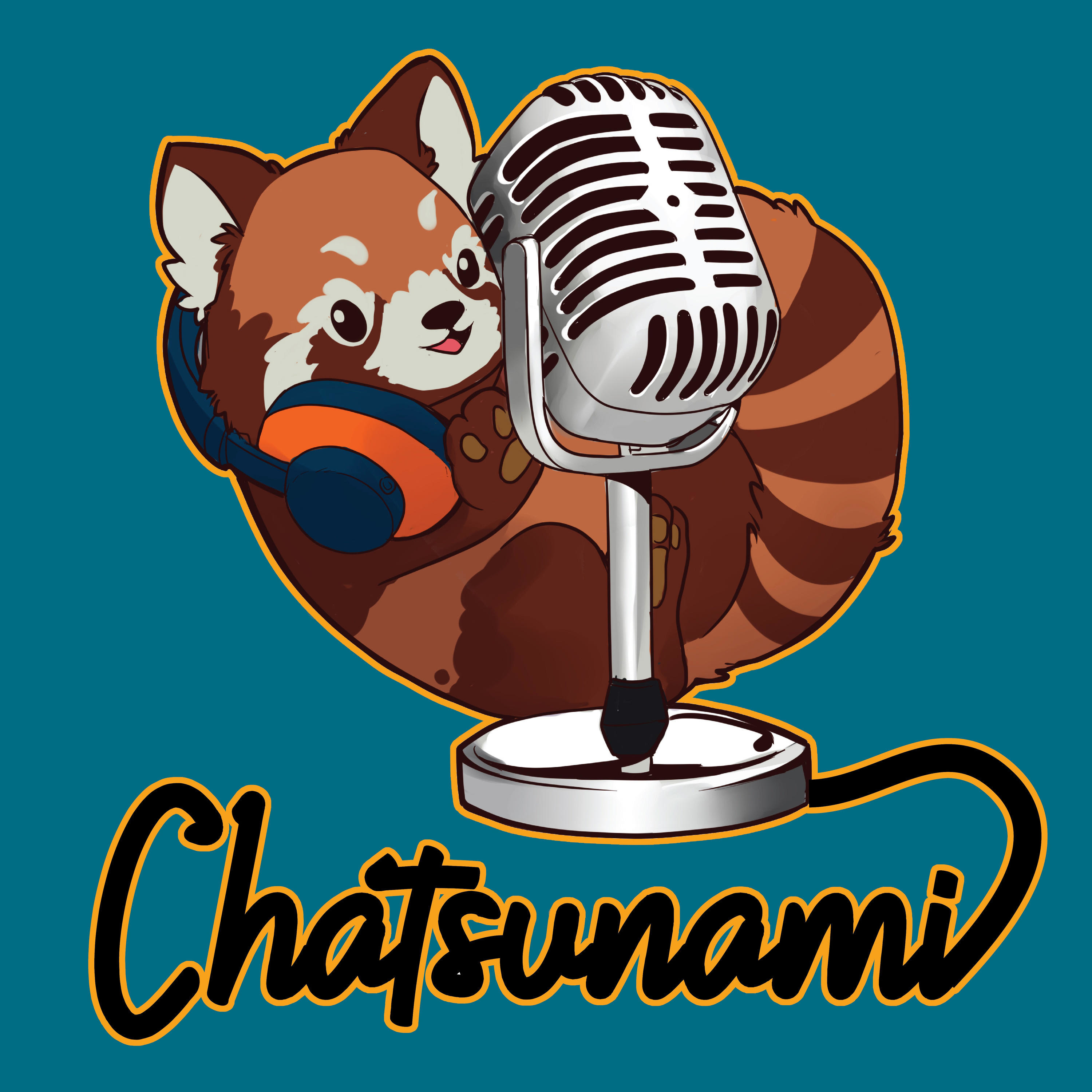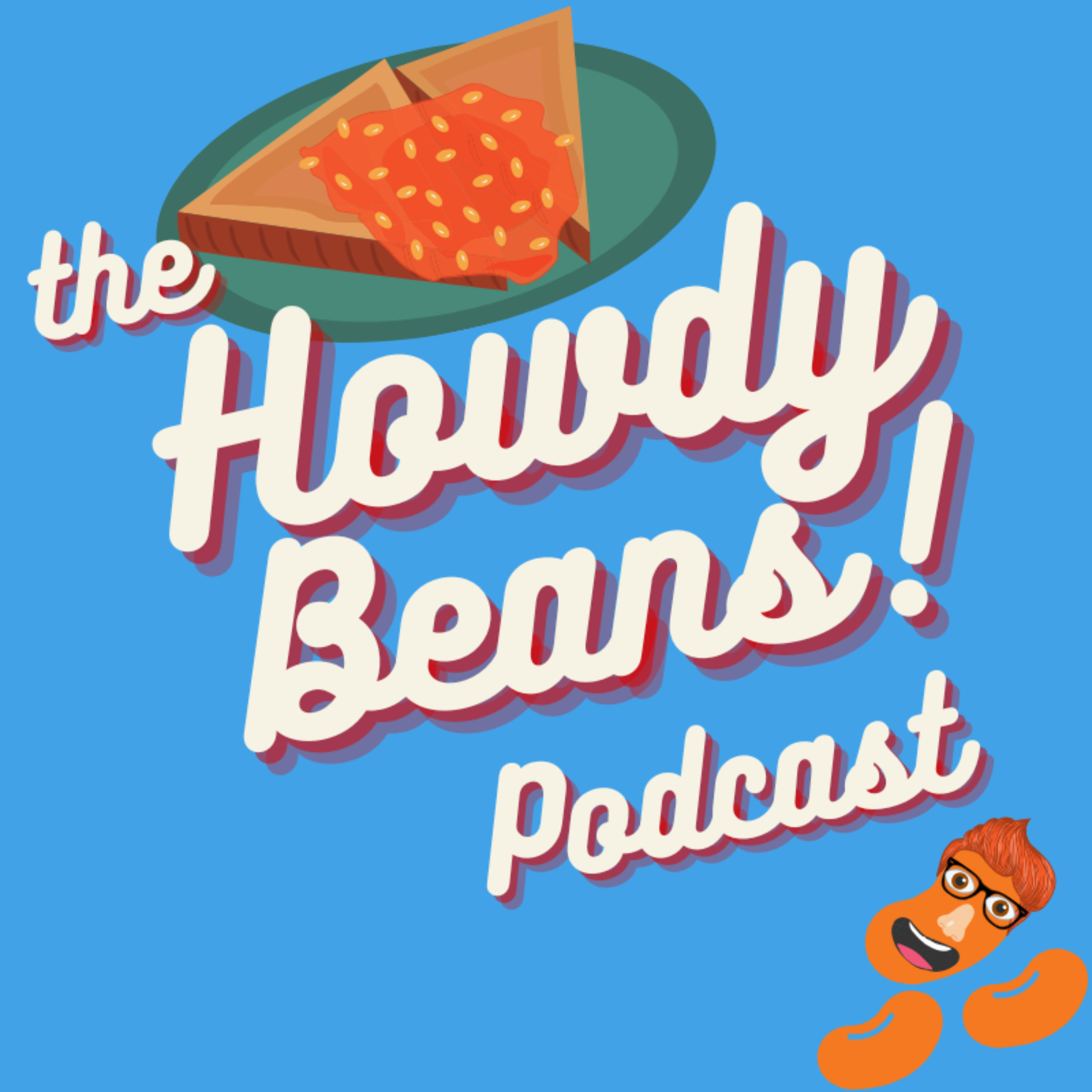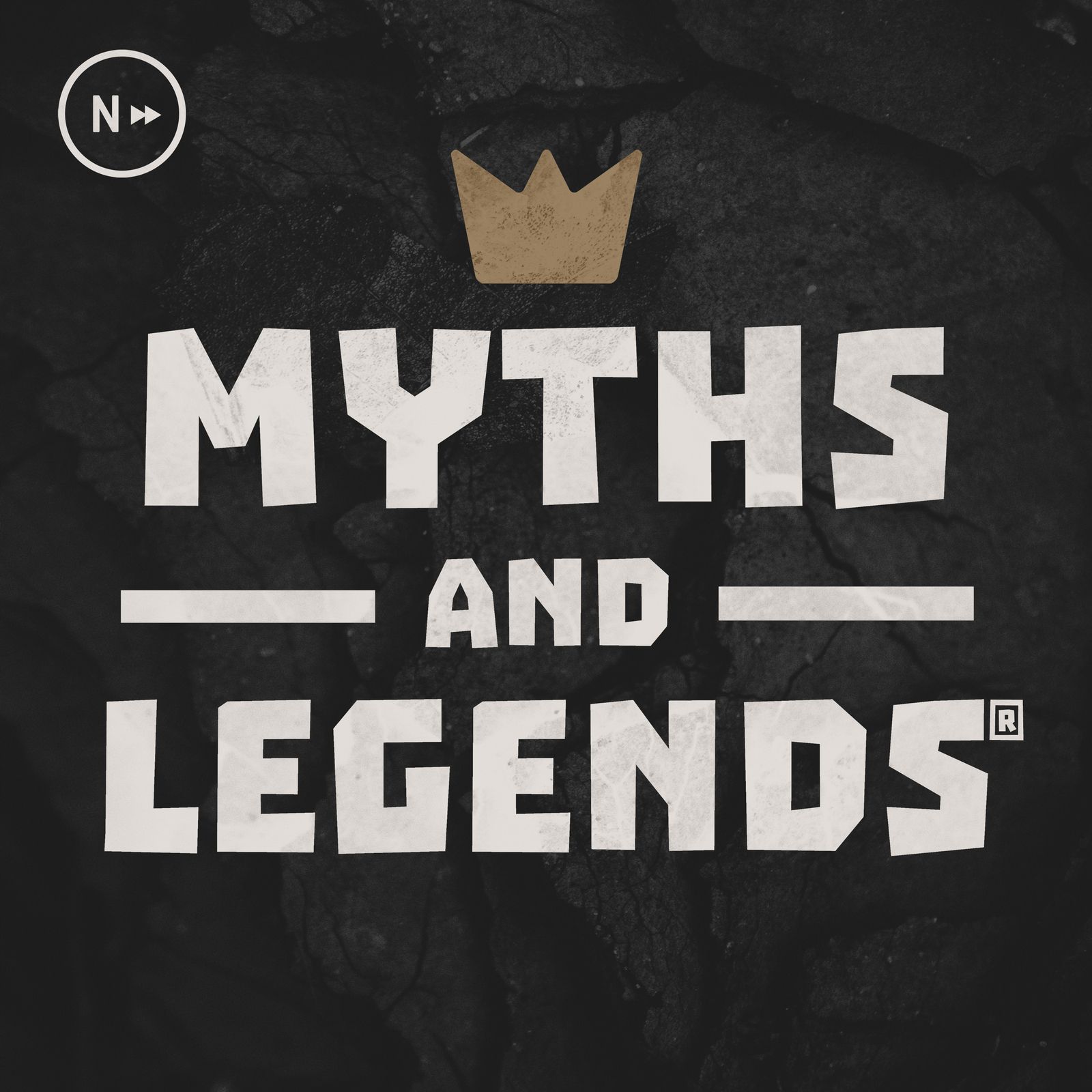
Myth Monsters
A bite sized look into the monsters of global folklore, cryptozoology and mythology with your host, Erin. Jump in and learn about your favourite monsters from Gorgons to Kelpies, to Wendigos to Bigfoot. Stay spooky every Thursday with a new episode with a new monster from another culture. Get in touch on Twitter at @mythmonsterspod
Myth Monsters
Minotaur
For this week, we're looking at a true legendary Greek monster, the Minotaur! How did this monster come to be? Why are we still so in love with this monster from one myth? Find out this week!
You can find us on:
Social media:
INTRO:
Hello and welcome to Myth Monsters, my name is Erin and I’ll be your host for these little snack bite size podcasts on folklore and mythical monsters from around the world.
These podcasts focus on the actual cryptids, folklore and mythic monsters from global mythology, rather than focusing on full stories of heroes and their big adventures.
I’ll also be dropping in some references that they have to recent culture and where you can see these represented in modern day content so you can learn more, and get as obsessed as I am about these absolute legends of the mythological world.
We’re back to our classics this week, which is super exciting and so much easier for me to research and report back on - so I hope you’re ready for a good old Greek packed episode on most people’s favourite bull-headed man beast.
DESCRIPTION:
What is the Minotaur - what a question, and honestly, who doesn’t know the answer to this? If you have any interest in mythology, you’d usually know the answer - but even people who don’t have had some exposure to this kind of beast before.
The Minotaur is a Greek monster, which is generally described as a strong bodied man, wearing a loincloth - with a bull’s head, complete with horns and no ability to speak at all. He also has the tail of a bull emerging from a very human body, which I think is pretty strange. His nature is generally aggressive, and he is incredibly strong, like inhumanly - and can snap a man in half with his bare hands. He also of course has the bullish power to gore people with his horns, and unusually sharpened teeth to get through flesh. Unfortunately, unlike most bovine creatures, the Minotaur survives purely on human flesh rather than the green pastures of our dairy producing friends - a taste developed when he was a young calf I suppose. They are technically the exact opposite of a Centaur, another Grecian hybrid monster - with a horse's body and human upper half, intelligent and calculating. Whilst the Minotaur is much more brawl over brains and body wise, completely opposite with the upper half of a bull, and lower of a human.
I keep saying he, and that’s because in the myths surrounding the Minotaur, there is only one and he was unable to procreate before he was taken out. His name is Asterios and he was locked in a labyrinth to contain his monstrous nature from an early age in Knossos, on the island of Crete, just off of mainland Greece. The labyrinth was built by Daedalus, the famous Grecian architect with the construction powers of a god (but not really, he was just really good at building things) and his son Icarus, you might know this name from his untimely death with his wax wings flying too close to the sun.
They built this labyrinth to contain Asterios, and to make it inescapable for both him, and what he needed to sustain himself, virgin boys and girls that he would eat. It’s debated whether they were sent in for him to kill every year, every 7 years or every 9 years - but we do know that the third time this event came around - he was killed, but we’ll get more into the myth itself later on. Following his death, there have been no reports of Minotaurs, or any other myths about them - they now purely exist within the fantasy genre of media, or at least so we believe.
ORIGIN:
Onto etymology, the word Minotaur is ancient Greek, which comes from the words Minos, which is a name and tauros, meaning bull. You might be thinking, well Erin - you mentioned Centaur earlier, which has the same taur on the end. Well I did mention this in the Centaur episode I did not too long ago, and it still comes from tauros - however, the Cen part means piercing, so their whole name is piercing bull, which was actually linked to their hunting of bulls, rather than anything to do with the Minotaur - so they derive from the same roots, but for completely different meanings, even though they are similar monsters. FUN RIGHT?!
Minos though - what’s the deal with this name, must be important for it to be in the name of the monster right? Absolutely right. This all has to do with the myth that creates this monster right from the mouth of Ancient Greeks - who if you didn’t know starts at 9000 BC, which was an immensely long time ago.
Minos was the name of a new king of Crete, who was competing with his brothers for the throne. He prayed for a white bull to show his brothers the god’s favour from Poseidon, god of the sea, to sacrifice to show his worth - but when this beautiful bull was delivered, he could not bring himself to kill it. Poseidon did not take kindly to this, and made the Queen, Pasiphae, fall in love with the bull. The Queen called on Daedalus to create a wooden cow that was hollow, so she could climb into it and make the bull mate with her - which is pretty gross.
Once the act was done, she fell pregnant and eventually gave birth to the Minotaur, a half man, half bull to represent his mixed species heritage. Pasiphae nursed him for as long as she could, however, his appetite and aggression became too much for her to handle. Minos in concern, went to the Oracle at Delphi and they told him to construct the mighty labyrinth to contain the beast, and so Daedalus was called on a second time.
So it’s in the labyrinth, how did we get to virgin flesh eating from here? Well there were other children born of the King and his wife - including Prince Androgeus. He was killed by Athenians, and the king decided to take vengeance in the cruellest way, by demanding 14 young men and women every few years as a sacrifice to the Minotaur. It was terribly traumatising for the Athenians, and eventually, the demi-god hero and prince of Athens, Theseus, rose by the third call of blood from Crete.
Before venturing into the labyrinth, Minos’ daughter Ariadne fell in love with Theseus and told him to take a ball of string through the labyrinth to mark his way - and Theseus managed to kill Asterios with his bare hands. The hero abandoned Ariadne on the way back to Athens, leaving her to the god Dionysus on Naxos island. When sailing back home though, Theseus mistakenly raised a black flag implicating his death in the labyrinth to which his father, King Aegeus, thought the worst and so threw himself in the sea that is now named after him in mourning - making Theseus king. Fun fact about sea names to end this bit - it’s a great story.
Now this story has been around since the Ancient Greeks - so it’s absolutely ancient itself. However, it was made famous by the poet Ovid, who was around from 43 BC - 18 AD, so you can tell how old this is. The myth is a favourite of historians and teachers alike, and is most likely one you’d hear at school when you’re learning about the Ancient Greek myths.
You know what’s wild though, is that Minos was almost cursed from the beginning of this myth to have a bullish son, as his mother was the famous Europa. Europa was considered the most beautiful woman in Europe, and the king of the gods, Zeus wanted her for his own. He ended up taking the guise of a pure white bull, much like the one Minos summoned from Poseidon. Europa ended up having three sons with Zeus, including Minos - which definitely adds to the whole bull as a name, and almost presets him to have some issues with cows in life.
There are of course, not many real life comparisons with the Minotaur, generally due to the hybrid nature of the monster - but also due to the parentage of Asterios, which is pretty much concluded impossible, but also really really gross. Poor Pasiphae, is all I have to say on this one. In terms of Greek myths though, it’s pretty normal - this one is probably tied with Perseus and Medusa or the Kraken in terms of popularity, although I don’t think either of these two myths stand up to Heracles - which makes sense I suppose.
Could this myth actually mean anything though in the grand scheme of things? Are there any hidden meanings here? I’m not too sure on that one, I think the biggest thing is maybe don’t have sex with a bull - I think that one is pretty clear, and this all stemmed from two women doing this. The other I suppose is always, respect the gods - if you ask for something and they give it to you with an expectation, probably do that expectation - we’ve seen worse punishments within Greek myths, I mean look at Atlas, Sisyphus, Prometheus - this is nothing on them - but I still think your wife having a child with a literal bull that is a monster in itself is pretty bad.
What happened to the idea of the Minotaur though - we don’t actually know why this was never picked up again within myths, however, this myth is so popular that the Minotaur now is involved in pretty much every fantasy movie ever made - even though it’s only mentioned within one myth in the entirely of ancient history. So it definitely shows if you create a really cool monster, it’ll outlast what it’s come from and shine in a few thousand years in tv shows I guess.
CULTURAL SIGNIFICANCE:
Now onto modern media, obviously there are loads here - so I hope you’re ready to take some notes.
For art, we’ve got some actual portraits - Theseus and the Minotaur in the Labyrinth from 1861 by Edward Burne-Jones, Dante and Virgil meet the Minotaur by Gustave Doré, also from 1861, Picasso’s Minotaur Kneeling over Sleeping Girl from 1933 and from 1935, Minotauromachy. Otherwise, independent art is always a suggestion, and really a recommendation.
In movies, we have; Wrath of the Titans, The Scorpion King, Sinbad and the Eye of the Tiger, Minotaur, The Wild Beast of Crete, Time Bandits, Immortals, Dave Made a Maze, Percy Jackson and the Lightning Thief, Inkheart, Dr Strange and the Multiverse of Madness, The Chronicles of Narnia, Slumberland, Hercules, Gods of Egypt, Role Models, Onward, Your Highness & Anchorman 2: The Legend Continues.
For TV, we have; Digimon, Fairy Tail, Bleach, Fullmetal Alchemist, American Horror Story, Kamen Rider, MythQuest, Power Rangers, Ultraman Ace, Adventure Time, One Piece, Castlevania, CentaurWorld, Ducktales, Wishfart, Gravity Falls, Fairly Odd Parents, The Hollow, Jimmy Two Shoes, My Little Pony: Friendship is Magic, The Smurfs, Dan Vs, Egyxos, Freakazoid, Gargoyles & The Venture Bros.
In video games, we have loads such as; Castlevania, Dark Souls, Battleborn, Age of Mythology, Dark Adventure, Blue Dragon, Elder Scrolls, Diablo, Dwarf Fortress, Fantasy Quest, Warlords Battlecry, Final Fantasy 8 & Mystic Quest, Guild Wars 2, Defence of the Ancients, Grandia, Hades, Hero of Sparta, League of Legends, Might and Magic, God of War, Miitopia, Oriental Legend, Heretic, Quest for Glory, Shin Megami Tensei, Total War, Fate/Grand Order, Warcraft, World of Warcraft, Zeus: Master of Olympus, Goblin Sword & Will Rock.
My book recommendation this week is Greek Myths: Meet the heroes, gods, and monsters of ancient Greece by Jean Menzies because we always suggest this one - it’s a great book! Another is Heroes by Stephen Fry because it’s fantastic, and it’s Stephen Fry, and although it does go through the hero route - you still get to learn about all these monsters and the context of their existence.
DO I THINK THEY EXISTED?
Now it’s time for, do I think they existed? 1634
Like with most of my hybrid monsters, with this one - I’m going to say no. Why is this, do you reckon? Well because the possibility of it existing is something from a nightmare, rather than that of reality. The existence of a half bull, half man running around is pretty horrendous - but at least he was consigned to one specific part of the world I suppose, and if legend is true - there’s only one of them, so the possibility of more of them is pretty slim anyway.
If we are to believe it, I think it’s a good shout to think that there was just the one - and it died a very, very long time ago - after eating many a virgin Athenian. What I do love is that the Minotaur has survived from his one mention, and is now considered one of the main fantasy races - and I’m so glad people can identify this monster even if they’ve not heard the story of Asterios - it fills me with absolute joy that mythology spreads this way.
But what do you think? Did the Minotaur roam the Earth? Let me know on Twitter!
OUTRO:
A fantastic Greek monster as always, and one that’s such a legend that it was a pleasure to cover - and it’s a nice difference to these more elusive ones we’ve covered over the last few weeks!
Next week, we’re heading over Africa and more specifically, Tanzania for the horrifying Popobawa! Keep your noses sharp for this midnight poltergeist next Thursday!
For now, thank you so much for listening, it’s been an absolute pleasure. If you enjoyed this podcast, please give it a rating on the service you’re listening on - I’ve got the twitter for any questions, or suggestions on what monsters to cover next and I’d love to hear from you. The social media handles for Tiktok, Youtube and Instagram are mythmonsterspodcast, and twitter is mythmonsterspod. But all of our content can be found at mythmonsters.co.uk - you can also find us on Goodpods, Buymeacoffee and Patreon if you want to help me fund the podcast too.
Come join the fun though and share this with your pals, they might love me as much as you do.
But for now, stay spooky and I’ll see you later babes.
Podcasts we love
Check out these other fine podcasts recommended by us, not an algorithm.

FolkLands
Tim Downie, Justin Chubb
Chatsunami
Satsunami
The Howdy Beans Podcast!
Luke The Elder Bean!
My Brother, My Brother And Me
The McElroys
Myths and Legends
Jason Weiser, Carissa Weiser, Nextpod
Lore
Aaron Mahnke
Exploration: Dreamland
Exploration: Dreamland
The Neatcast
Jeremy, Zack, Mike
Effin' Cultured
Bobby, Griff, and The Rik
